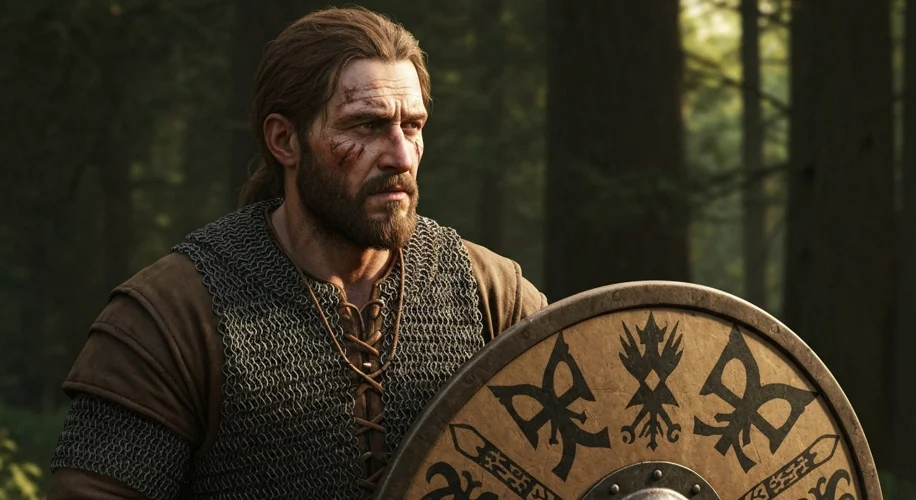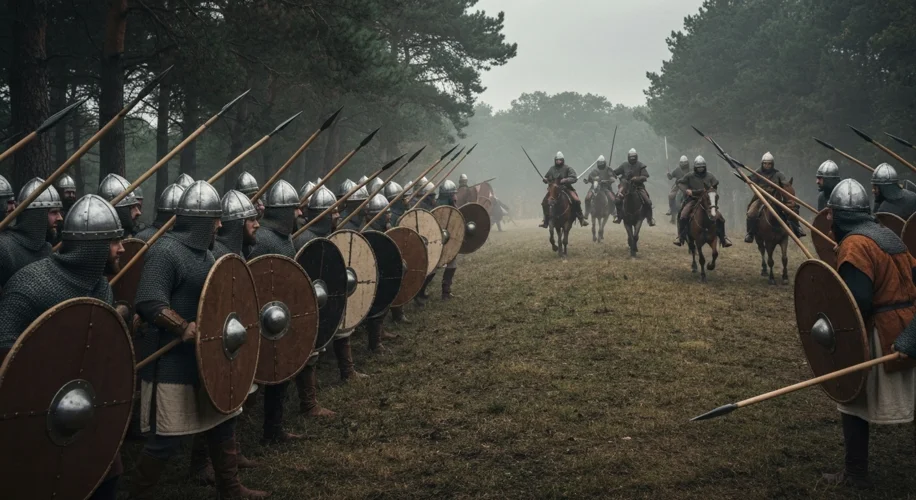The year is 732 AD. The sun beat down on the rolling hills of Aquitaine, casting long shadows that did little to quell the rising dread. For weeks, a formidable army, clad in gleaming armor and bearing the crescent moon of the Umayyad Caliphate, had carved a path of conquest through the heart of Frankish territory. Their objective was clear: plunder the rich churches and cities of the north, extending their dominion ever westward.
At the forefront of this relentless tide stood Abd al-Rahman al-Ghafiqi, the governor of Al-Andalus. A seasoned warrior and devout Muslim, he had already subdued much of the Iberian Peninsula and was now leading his army, a diverse force of Arabs and Berbers, deeper into Frankish lands. They had sacked Bordeaux, looted churches, and enslaved countless people. The Frankish dukes and counts were either defeated or in disarray, their decentralized kingdoms ill-equipped to face such a unified and powerful foe.
But across the path of this seemingly unstoppable force stood a man of iron will and strategic genius: Charles Martel. Known as “The Hammer,” Charles was the de facto ruler of the Franks, a powerful warrior who had spent years consolidating his authority and building a formidable military force. He understood the existential threat posed by the Umayyad advance. Unlike the fractured kingdoms to his south, Charles had forged a disciplined army, largely composed of seasoned infantrymen, armed with spears, swords, and shields. They were not knights in shining armor, but hardened warriors who understood the brutal realities of close-quarters combat.
As Abd al-Rahman’s army approached the vicinity of Tours, a city renowned for the wealthy Abbey of Saint Martin, Charles positioned his forces on a wooded ridge. His strategy was simple yet audacious: to make his infantry a nearly impregnable wall against the famed Umayyad cavalry. The Frankish soldiers, many of whom were veterans of Charles’s previous campaigns, formed a tight phalanx, their shields locked together, presenting a bristling hedge of spears.

Abd al-Rahman, confident in the prowess of his cavalry, launched wave after wave of attacks against the Frankish lines. The Umayyad horsemen, renowned for their speed and ferocity, charged with lances and scimitars, seeking to break the Frankish formation. But the Franks held firm. The terrain, combined with the disciplined defense, blunted the cavalry’s impact. The close-packed ranks of Frankish foot soldiers absorbed the shock, their shields deflecting blows and their spears finding any gap in the attackers’ defenses.
The battle raged for hours, a brutal exchange of steel on steel. The air was thick with the cries of men and the clang of weapons. The Franks, fighting for their homes and their faith, held their ground with remarkable tenacity. They were described by contemporary chroniclers as being like a “wall of ice,” unyielding and resolute.
As the day wore on, a critical turning point arrived. Rumors spread through the Umayyad ranks that the Franks were attacking their camp, where their plunder and families were kept. This caused confusion and disarray. Some Umayyad soldiers broke off from the main engagement to protect their rear.
Seeing the wavering in the enemy lines, Charles ordered his men to maintain their formation. Abd al-Rahman, attempting to rally his forces and perhaps retrieve his wavering men, was caught in the melee. In the chaos of the battlefield, he was struck down and killed. The death of their commander shattered the Umayyad army’s morale.
With the loss of their leader and the growing disarray, the Umayyad forces began a general retreat under the cover of darkness. The Franks, ever cautious, remained in their defensive positions, wary of a trap. When dawn broke, they found the Umayyad camp abandoned. The invasion had been decisively halted.
The Battle of Tours, or Poitiers as it is also known, was more than just a military victory. It was a moment that reverberated through the centuries. While historians debate the precise scale of the Umayyad threat and the battle’s exact impact on the course of European history, its significance as a turning point is undeniable. It marked the high-water mark of the Umayyad Caliphate’s expansion into Western Europe. The defeat severely weakened their presence north of the Pyrenees, and they would never again launch such a large-scale invasion into the Frankish heartland.
For Charles Martel, the victory cemented his reputation as the savior of Christendom. He would go on to further consolidate his power, paving the way for his son, Pepin the Short, and his grandson, Charlemagne, to establish the Carolingian Empire, a foundational element of medieval Europe. The battle became a potent symbol of resistance against foreign invasion and a testament to the strength of disciplined, unified defense. It was a clash where ordinary men, standing shoulder to shoulder, played a crucial role in shaping the future of a continent, a day when the “Hammer” struck a blow that echoed through the ages, protecting the nascent kingdoms of Western Europe from a tide of conquest.

